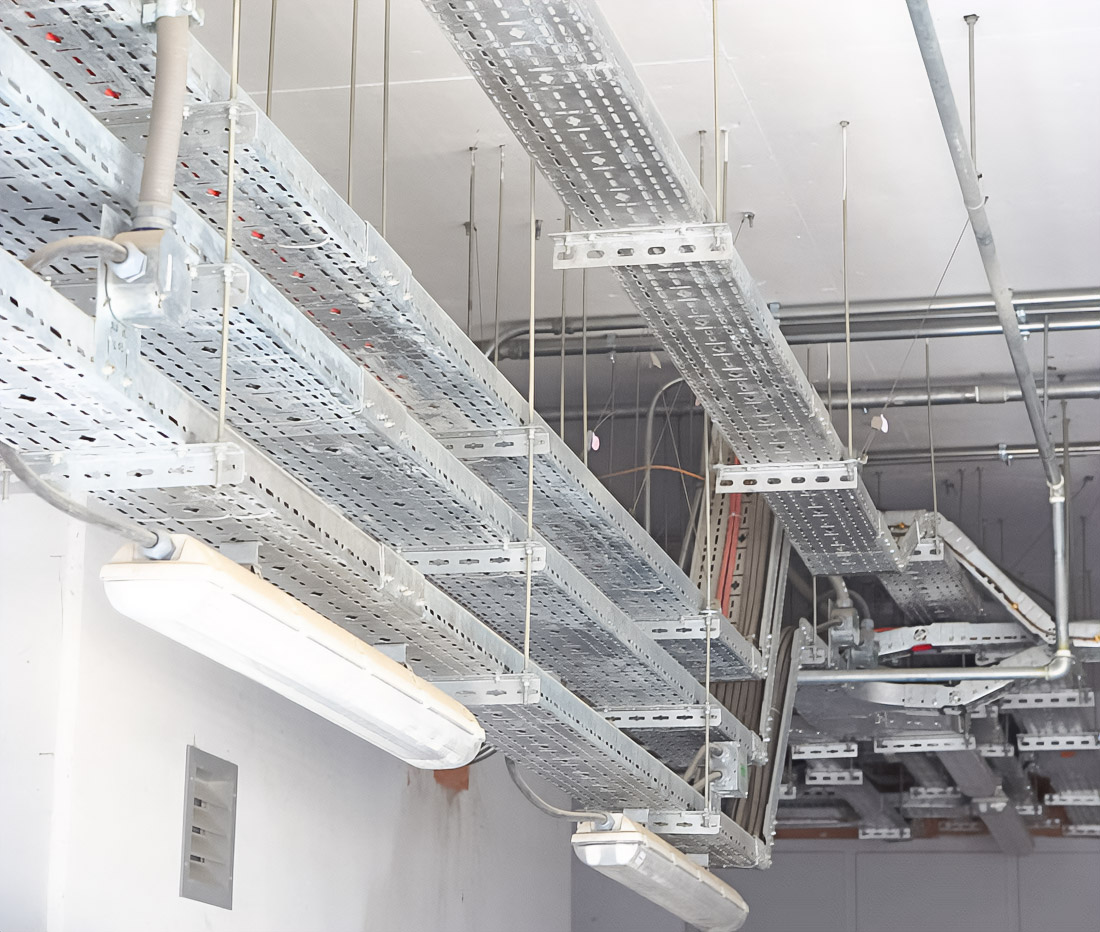In recent years, sustainable construction has taken a leading place in sphere architecture and engineering solutions on a global level. This trend became an unchanging part of process design and construction. One of the most important aspects in the implementation of similar projects is the competent choice of materials and engineering solutions, which meet the most strict environmental standards. Cable trays, as key elements in system provision power supply buildings, play a decisive role in this ecosystem. They provide safe and reliable management cable systems, minimizing their impact on the environment. For certification according to standards, LEED cable trays must meet a series of strict criteria, allowing the building to claim the status “green.” Bonngulf offers diverse solutions, corresponding to these requirements.
Content of Page
What factors determine the choice of cable trays for certification LEED?

- Materials: Cable trays need to be made of recyclable and eco-friendly materials. Due to their high recycling rates and ability to retain their mechanical and physical qualities, steel and aluminum are common materials for these kinds of items. The use of these solutions aids in the transition to sustainable development and the decrease of carbon emissions.
- Energy efficiency: Cable trays must minimize costs on energy consumption. This can be realized through the use of trays, which provide optimal ventilation cables, which prevent overheating and reduce load on systems air conditioning.
- Environmental sustainability: Durability and resistance cable trays to external influences important for reduction necessity of frequent replacement and repair, and means — reduction volume waste and use resources.
Market analysis: leaders among suppliers cable trays for LEED-certified objects
- Panduit: Company Panduit offers an extensive range of cable trays manufactured from materials that are recyclable. Innovative solutions on cable management offered by this company meet all modern requirements LEED. Products Panduit established themselves as highly energy efficient and durable.
- Legrand: Legrand is known for its solutions, contributing to the reduction of carbon footprint in buildings. Used by the company, recyclable steel and aluminum provide environmental sustainability products. Products Legrand includes technologies for optimizing energy consumption.
- Cooper B-Line (Eaton): Representing products with high degree recycling, Cooper B-Line, branch Eaton, creates solutions, satisfying requirements LEED. High sustainability and energy efficiency are characteristic features of their products.
Unique offers and their compliance standards LEED
- Panduit: By integrating with the cooling system, Trays Panduit keeps cables at the ideal temperature while lessening the strain on the air conditioner. This results in a decrease in energy usage and aligns with LEED energy efficiency guidelines.
- Legrand: By actively using recycled materials, the company lessens its environmental impact. Legrand offers solutions for cable management that fulfill LEED standards and have low energy expenses.
- Cooper B-Line (Eaton): Products Cooper B-Line emphasizes durability and sustainability in various operating conditions. Their solutions aimed at minimizing waste and resources, which corresponds to principles LEED-ecological.
Implemented projects, demonstrating success
- Modern office center in New York with cable trays Panduit: In framework modernization business center in New York application products Panduit allowed to reduce energy consumption system air conditioning on 15%, which helped object to achieve status LEED Gold.
- Eco-friendly office structure in San Francisco with products Legrand: In one of the office buildings, San Francisco trays Legrand contributed to the achievement of LEED Platinum thanks to the use of recyclable materials and energy-efficient solutions.
- Transformation commercial building in Chicago with Cooper B-Line: In Chicago commercial center cable trays from Cooper B-Line reduced frequency replacements and repairs by 30%, increasing compliance standards LEED.
How to choose suitable supplier?
- Project features: Consider scale, budget, and ecological-economic needs of the project in choice supplier, ensuring the most suitable solutions.
- Materials and technologies: Evaluate used materials and applied technologies. Suppliers should be given preference for products made from recyclable materials and energy-saving solutions.
- Experience and trust: Explore reputation and successful experience work with potential partners for achievement of the highest standards LEED. Sustainable construction is important aspect in choice supplier.
- Technical support: Check the availability of supplier services and support necessary for the successful completion of the project.
Choice of suitable supplier cable trays for projects, certified according to standards LEED, requires analysis and understanding of unique requirements for each project. Considering the significance of sustainable development, a solution to this task will become a significant step on the path to the creation of environmentally safe and energy-efficient buildings.

